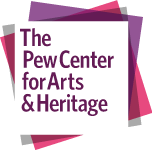What Is a Danced Lecture?
by Dr. Susan Leigh Foster
I first began presenting “danced lectures” in 1980 and have been experimenting with alternative ways to deliver a lecture while dancing ever since. My goal in developing this form of presentation has been two-fold: first, I want to place directly in front of the audience an example of the subject I am lecturing about, i.e. a moving, dancing body; and second, I want to comment upon the format of the lecture itself, since it is, after all, a performance in which the body of the lecturer typically stands very still and everyone watching seems to pretend that the speaker is merely reading aloud what would normally be read silently.
In an effort to challenge this conventional version of a lecture, to rub the viewers’ faces in the urgency and immediacy of dancing while also satirizing the stuffy pretentiousness of the occasion, I have hurled myself around the room fervently grasping the lecture notes, climbed out across the seats and people in the auditorium, attacked the podium, and so forth, all the while reading away.
In developing both the lecture and the dance that coincides with it, I have envisioned each as a separate discourse capable of illustrating and also commenting on the other. I would hope that each, the dance and the lecture, puts forth a distinctive argument, and that their friction in juxtaposition amplifies the thesis that is being developed.
The danced lecture is different from the talking dance, a form that I have also pursued. In the former, the lecture takes precedence in that it is created first and for a scholarly academic context, whereas in the latter, the dance, crafted for a theatrical setting, motivates and drives the talking. For one of my presentations here in Philadelphia, The Ballerina’s Phallic Pointe, there exists a danced lecture, a talking dance, and an essay, all of which are quite different from one another.
I have chosen the danced lectures that I am presenting here because they embody a diverse range of approaches to creating a dialogue between scholarly and artistic arguments. The Live Arts space is, perhaps, slightly too theatrical for the typical room in which lectures are delivered, so I ask you to imagine a space with some books lining the walls, no special lighting of any sort, and a long tradition of audience members nodding off while the speaker drones on, then suddenly notices that time has run out and, in a panic, skips to the last paragraph.
I want to thank Bill Bissell for his warm hospitality and support of my work, and The Pew Center for Arts & Heritage as well as a marvelous production and filming crew. I also want to give a shout-out to my many friends and colleagues here—Brenda Dixon Gottschild, Hellmut Gottschild, Sharon Friedler, Donna Faye Burchfield, Leah Stein, and Headlong Dance Theater—whose efforts have made Philly one of the great cities for dance in the U.S.

